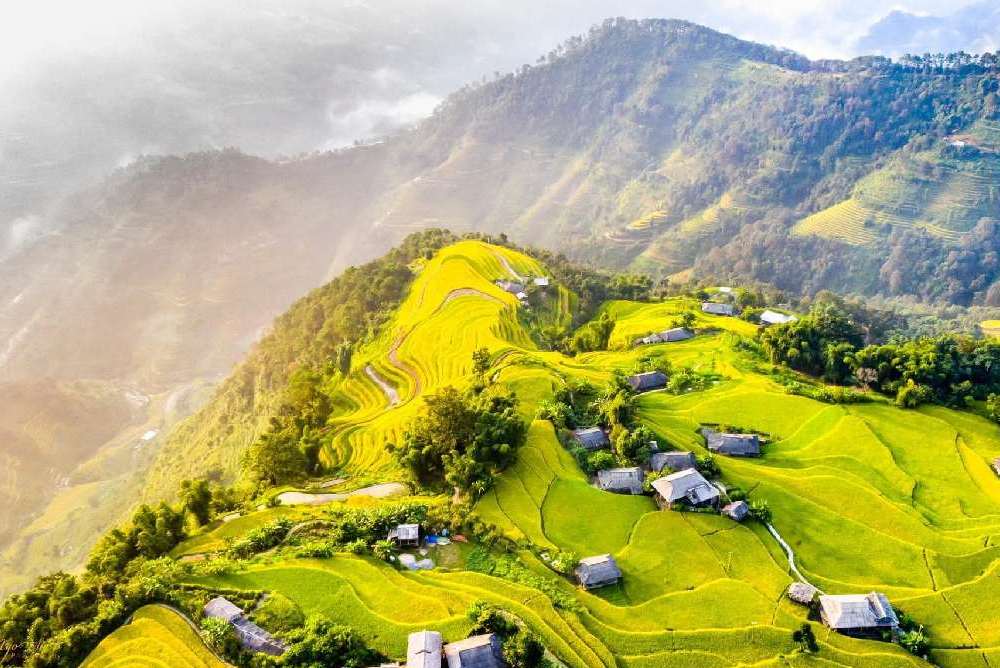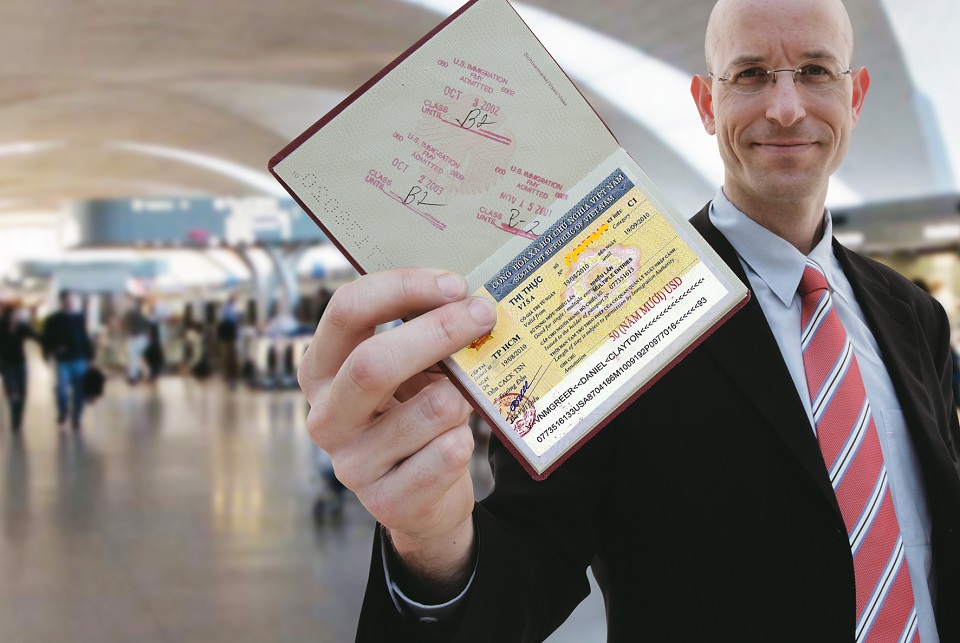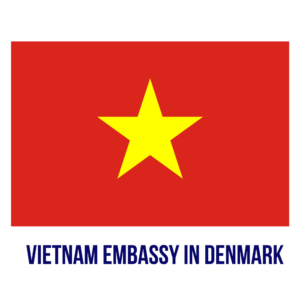Vietnam’s Top Destinations for Danish Tourists offer a perfect blend of cultural immersion, natural wonders, and sustainable travel experiences. Danish travelers, known for their love of authenticity and outdoor adventures, will find Vietnam’s diverse landscapes and rich heritage irresistible. From the bustling streets of Hanoi to the serene rice terraces of Sapa, this guide explores the must-visit spots tailored to Danish preferences.
Table of Contents
Introduction: Why Vietnam Appeals to Danish Tourists

Vietnam’s Top Destinations for Danish Tourists resonate deeply with the values Danish travelers hold dear: sustainability, cultural depth, and natural beauty. Denmark’s flat landscapes and structured cities contrast sharply with Vietnam’s dynamic terrains and chaotic charm, making it an exciting destination for adventure and relaxation alike.
Danish tourists often seek destinations that offer more than just sightseeing—they crave meaningful interactions, eco-conscious travel options, and opportunities to disconnect from modernity while reconnecting with nature. Vietnam delivers on all fronts, from its UNESCO-listed sites to its vibrant street food culture.
The Danish Travel Ethos: Aligning with Vietnam’s Offerings
Danish travelers prioritize authenticity. They prefer homestays over luxury hotels, local markets over shopping malls, and trekking over guided bus tours. Vietnam’s rural villages, like those in Sapa, provide immersive experiences where Danes can live alongside ethnic minorities, learning traditional crafts and farming techniques.
Sustainability is another critical factor. Danish tourists are drawn to destinations that minimize environmental impact. Vietnam’s growing eco-tourism initiatives, such as Ha Long Bay’s plastic-free cruises or Hoi An’s bicycle-friendly streets, align perfectly with this mindset.
Lastly, value for money matters. While Denmark is a high-cost country, Vietnamese destinations offer premium experiences—like private junk boat cruises or tailor-made clothing—at a fraction of European prices. This affordability allows Danish tourists to indulge without guilt.
Vietnam’s Unique Selling Points for Danish Visitors
Vietnam’s Top Destinations for Danish Tourists stand out due to their diversity. In a single trip, one can explore ancient temples, kayak through limestone caves, and unwind on pristine beaches. The country’s compact geography makes it easy to experience multiple regions without excessive travel time.
Cultural richness is another highlight. Danish visitors often express fascination with Vietnam’s layered history, from French colonial architecture in Hanoi to the remnants of the Cham Kingdom in Hoi An. These layers provide endless opportunities for learning and photography.
The warmth of Vietnamese people further enhances the appeal. Danes, who value community and egalitarianism, appreciate the genuine hospitality they encounter—whether sharing a meal with a Hanoi street vendor or chatting with a Sapa homestay host.
Hanoi’s Historical Charm: A Cultural Immersion for Danish Visitors

Hanoi, Vietnam’s capital, is a treasure trove of history, street food, and bustling markets. For Danish tourists, the city offers a sensory overload—a delightful contrast to Denmark’s orderly urban spaces.
The Old Quarter: A Maze of Authenticity
The heart of Hanoi, the Old Quarter, is a labyrinth of 36 streets, each historically dedicated to a specific trade. Danish visitors love wandering these alleys, where silk shops, herbal medicine stalls, and steaming pho stands create a vibrant tapestry.
The area’s chaotic energy is balanced by moments of tranquility. Hoan Kiem Lake, with its iconic red bridge leading to Ngoc Son Temple, provides a serene escape. Danes often start their mornings here, sipping egg coffee while watching locals practice tai chi.
Temples and History: Connecting with Vietnam’s Past
The Temple of Literature, Vietnam’s first university, is a must-visit. Danish tourists appreciate its scholarly ambiance and well-preserved Confucian architecture. The quiet courtyards and stone stelae inscribed with scholars’ names offer a reflective contrast to the city’s hustle.
For those interested in modern history, the Ho Chi Minh Mausoleum and Museum provide insights into the country’s revolutionary leader. The adjacent Presidential Palace and Uncle Ho’s stilt house add layers to the narrative, showcasing his modest lifestyle.
Street Food Adventures: A Culinary Journey
Danish foodies revel in Hanoi’s street food scene. A guided tour introduces them to banh mi (crusty baguettes filled with pâté and herbs), bun cha (grilled pork with noodles), and the infamous balut (fertilized duck egg). These flavors, though bold, align with Denmark’s own culinary adventurousness.
For a unique experience, many Danes join a cooking class in the Old Quarter. Learning to roll fresh spring rolls or simmer pho broth connects them to Vietnamese traditions in a hands-on way.
Ha Long Bay: Exploring the UNESCO World Heritage Site

Ha Long Bay’s emerald waters and towering limestone karsts are a magnet for nature-loving Danish tourists. This UNESCO site epitomizes the harmony between natural beauty and sustainable tourism.
Overnight Cruises: Sailing Through a Dreamscape
Danish travelers often opt for overnight cruises aboard traditional wooden junks. These journeys, complete with kayaking and cave explorations, offer an intimate way to experience the bay’s magic. Sunset views from the deck, with karsts silhouetted against the sky, are unforgettable.
Eco-friendly operators now dominate, using solar power and minimizing plastic waste. This resonates with Danish values, allowing visitors to enjoy the scenery guilt-free.
Active Exploration: Kayaking and Hiking
Kayaking through hidden lagoons like Luon Cave is a highlight. Paddling beneath arched limestone formations, Danes encounter secluded beaches and playful monkeys. It’s a stark contrast to Denmark’s flat waters, offering a thrilling new perspective on aquatic adventures.
For the more adventurous, Cat Ba Island’s hiking trails lead to panoramic viewpoints. The sweat-inducing climb rewards with vistas of the bay’s endless karsts—a sight that rivals Denmark’s highest “mountain,” Møllehøj.
Floating Villages: A Glimpse into Local Life
Visiting fishing villages like Cua Van or Vung Vieng provides cultural depth. Danish tourists learn how families live on houseboats, tending to fish farms and schools. These interactions highlight resilience and community—themes that resonate deeply with Danish social values.
Sustainable Tip: Choose cruises that support these villages by purchasing handicrafts or donating to local schools.
Hoi An’s Ancient Town: Tailoring Experiences and Culinary Delights
Hoi An, a UNESCO-listed gem, enchants Danish tourists with its lantern-lit streets, bespoke tailoring, and farm-to-table dining.
The Ancient Town: A Step Back in Time
Hoi An’s yellow-walled buildings and Japanese-covered bridge exude old-world charm. Danish visitors adore cycling through the car-free streets, stopping at tailor shops for custom-made áo dài or leather goods. The slow pace here is a welcome contrast to Denmark’s efficiency-driven lifestyle.
At night, the town transforms. Floating lanterns illuminate the Thu Bon River, and Danish couples often book a sunset boat ride—a romantic interlude amidst their travels.
Cooking Classes: From Market to Plate
Hoi An’s culinary scene is a draw. Danish food enthusiasts join morning market tours, selecting fresh herbs and rice paper before learning to craft white rose dumplings or cao lầu noodles. These classes emphasize local ingredients, mirroring Denmark’s own New Nordic cuisine trends.
A standout experience is a meal at Tra Que herb village. Tourists plant vegetables alongside farmers, then enjoy a feast made from their harvest. This farm-to-fork ethos aligns perfectly with Danish sustainability ideals.
An Bang Beach: Relaxation Meets Responsibility
Just a short bike ride away, An Bang Beach offers golden sands without the crowds of Nha Trang. Danish tourists appreciate the eco-conscious resorts here, many of which use recycled materials and serve organic food.
The beach’s laid-back vibe is ideal for unwinding. Yoga sessions at dawn or SUP boarding at sunset cater to Denmark’s wellness culture.
Nha Trang’s Coastal Beauty: Beaches and Water Activities
For Danish tourists craving sun and sea, Nha Trang delivers with its long coastline and vibrant marine life.
Snorkeling and Diving: Exploring Underwater Worlds
Nha Trang’s coral reefs rival those in Thailand or Bali. Danish divers flock to sites like Hon Mun Marine Park, where clownfish and sea turtles abound. The water’s clarity and warmth (compared to Denmark’s chilly Øresund) make it a snorkeler’s paradise.
PADI-certified courses are affordable here. Many Danes earn their diving licenses while on vacation, adding a new skill to their outdoor repertoire.
Vinpearl Island: Family-Friendly Fun
A cable car ride to Vinpearl Island offers thrills for Danish families. The amusement park, water slides, and aquarium provide a playful contrast to Vietnam’s cultural stops. It’s a chance for kids (and adults) to let loose.
Sustainable Note: Opt for eco-tours that avoid disturbing marine ecosystems, such as coral-friendly sunscreen-only operators.
Mud Baths and Hot Springs: Wellness Vietnamese-Style
After days of exploring, Danish tourists recharge at Thap Ba Hot Springs. Soaking in mineral-rich mud baths is a quirky yet effective way to soothe muscles. The communal aspect—sharing pools with locals—adds to the authenticity.
Sapa’s Trekking Adventures: Experiencing Northern Vietnam’s Landscapes
Sapa’s misty mountains and terraced rice fields offer Danish hikers a paradise unlike anything in flat Denmark.
Homestays in Ethnic Villages: Living Like a Local
Danish trekkers often choose homestays in villages like Ta Van or Cat Cat. Sleeping in stilt houses and sharing meals with Hmong families provides deep cultural exchange. The cool mountain air and lack of Wi-Fi encourage genuine connection—a rarity in hyper-connected Denmark.
Trekking Routes: From Easy Walks to Fansipan
Gentle hikes through Muong Hoa Valley reveal cascading rice terraces and bamboo forests. For the ambitious, conquering Fansipan (3,147m) via the cable car or a two-day trek is a badge of honor. The summit’s views are a world away from Denmark’s lowland vistas.
Markets and Handicrafts: Supporting Local Artisans
Bac Ha’s Sunday market is a riot of color. Danish visitors barter for indigo-dyed textiles and silver jewelry, directly supporting ethnic minorities. These purchases carry stories, making them more meaningful than generic souvenirs.
Conclusion
Vietnam’s Top Destinations for Danish Tourists cater perfectly to their love of culture, nature, and sustainability. From Hanoi’s bustling streets to Sapa’s tranquil peaks, each destination offers unique experiences that align with Danish values. Whether it’s kayaking in Ha Long Bay, tailoring in Hoi An, or trekking in Sapa, Vietnam promises memories that linger long after the flight home. For Danes seeking a blend of adventure and authenticity, Vietnam is an unbeatable choice.
`






